Tom's Hardware Verdict
Antec’s P10 Flux might look boring, but if that’s what you’re after, it offers excellent value with tons of noise damping and five fans.
Pros
- +
Fridge aesthetic
- +
Includes five fans
- +
Excellent noise damping
- +
Easy to work in
- +
Great value
Cons
- -
No top radiator exhaust
- -
Not the quality Antec used to deliver
- -
Disappointing fan controller
- -
Noisy fans
Why you can trust Tom's Hardware
If you’ve been following the PC space for a decade or more, you probably remember Antec for making a few boring, but high-quality silence-focused cases like the P180 series with their triple-layered side panels for extremely quiet acoustics. But the truth is, that Antec doesn’t exist anymore. The company hasn’t made a case like that in a long time, and while I understand that there just isn’t a big market for it anymore, especially with the abundance of quiet components to begin with, part of me is still sentimental for the old Antec.
But Antec is still kicking, and its new P10 Flux shows that the company still has what it takes to keep up, even if it does so somewhat unconventionally by today’s standards. This is a chassis that offers simplicity, a lovely fridge aesthetic and great performance, all at a better value than before. The P10 Flux has an MSRP of $80, but we’ve regularly seen it selling for as low as $65.
So, without further ado, let's find out of the Antec P10 Flux performs well, and whether it’s suitable for a spot on our Best PC Cases list.
Specifications
| Type | Mid-Tower ATX |
| Motherboard Support | Mini-ITX, Micro-ATX, ATX |
| Dimensions (HxWxD) | 19.1 x 8.6 x 18.8 inches (486 x 220 x 477 mm) |
| Max GPU Length | 15.9 inches (405 mm) |
| CPU Cooler Height | 6.9 inches (175 mm) |
| Max PSU Length | 8.1 inches (205 mm) |
| External Bays | 1x 5.25-inch |
| Internal Bays | 3x 3.5-inch |
| Row 8 - Cell 0 | 3x 2.5-inch |
| Expansion Slots | 7x |
| Front I/O | Front I/O |
| Row 11 - Cell 0 | 2x USB 3.0 |
| Row 12 - Cell 0 | 3.5 mm Audio/Mic Combo |
| Other | Fan Controller |
| Front Fans | 3x 120 mm (Up to 2x 140mm, 3x 120mm) |
| Rear Fans | 1x 120mm (Up to 1x 120mm) |
| Top Fans | None |
| Bottom Fans | 1x 120mm (Up to 2x 120 mm on PSU shroud) |
| Side Fans | ✗ |
| RGB | No |
| Damping | Yes, lots |
| Warranty | 1 Year |
Features
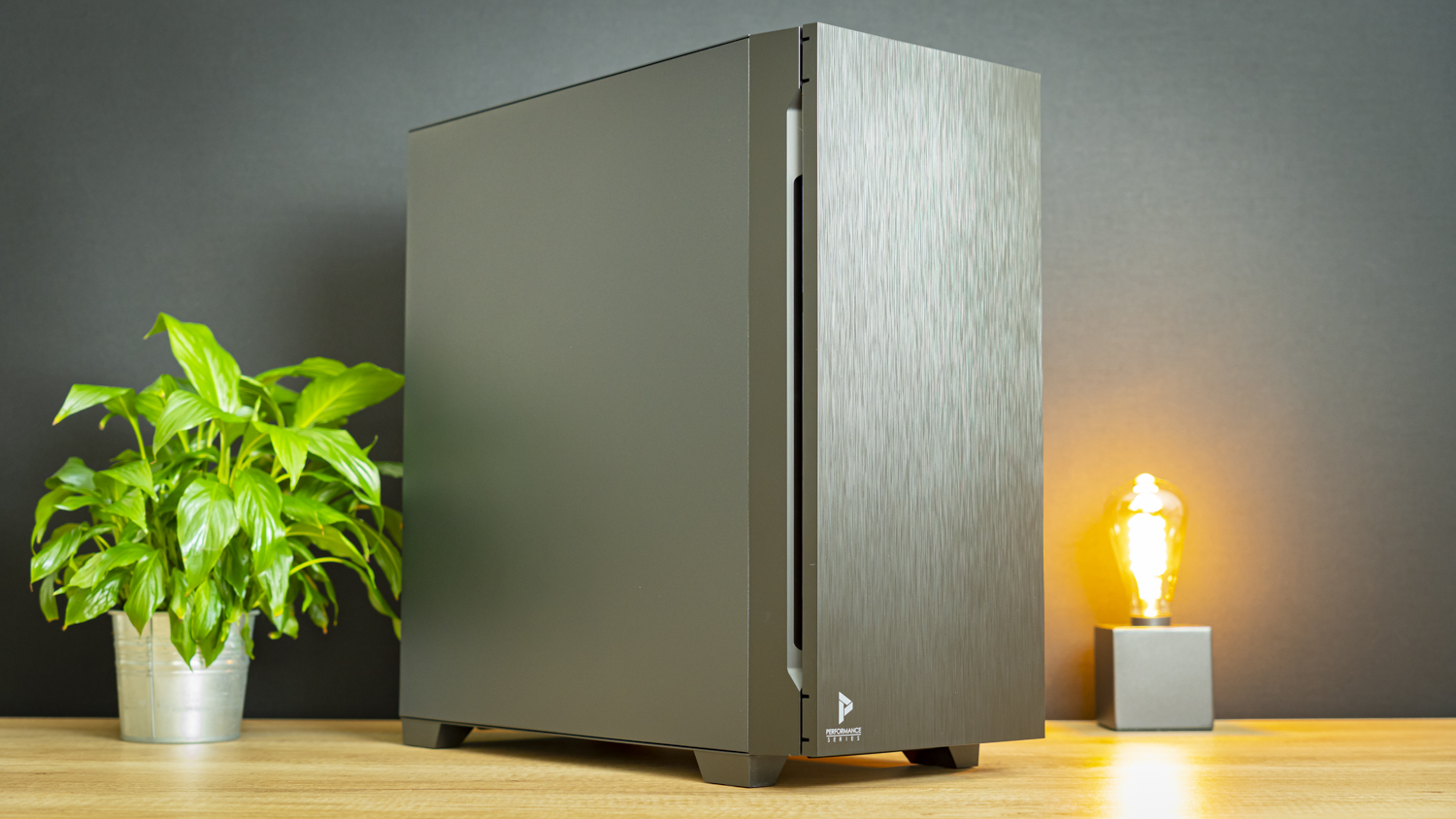
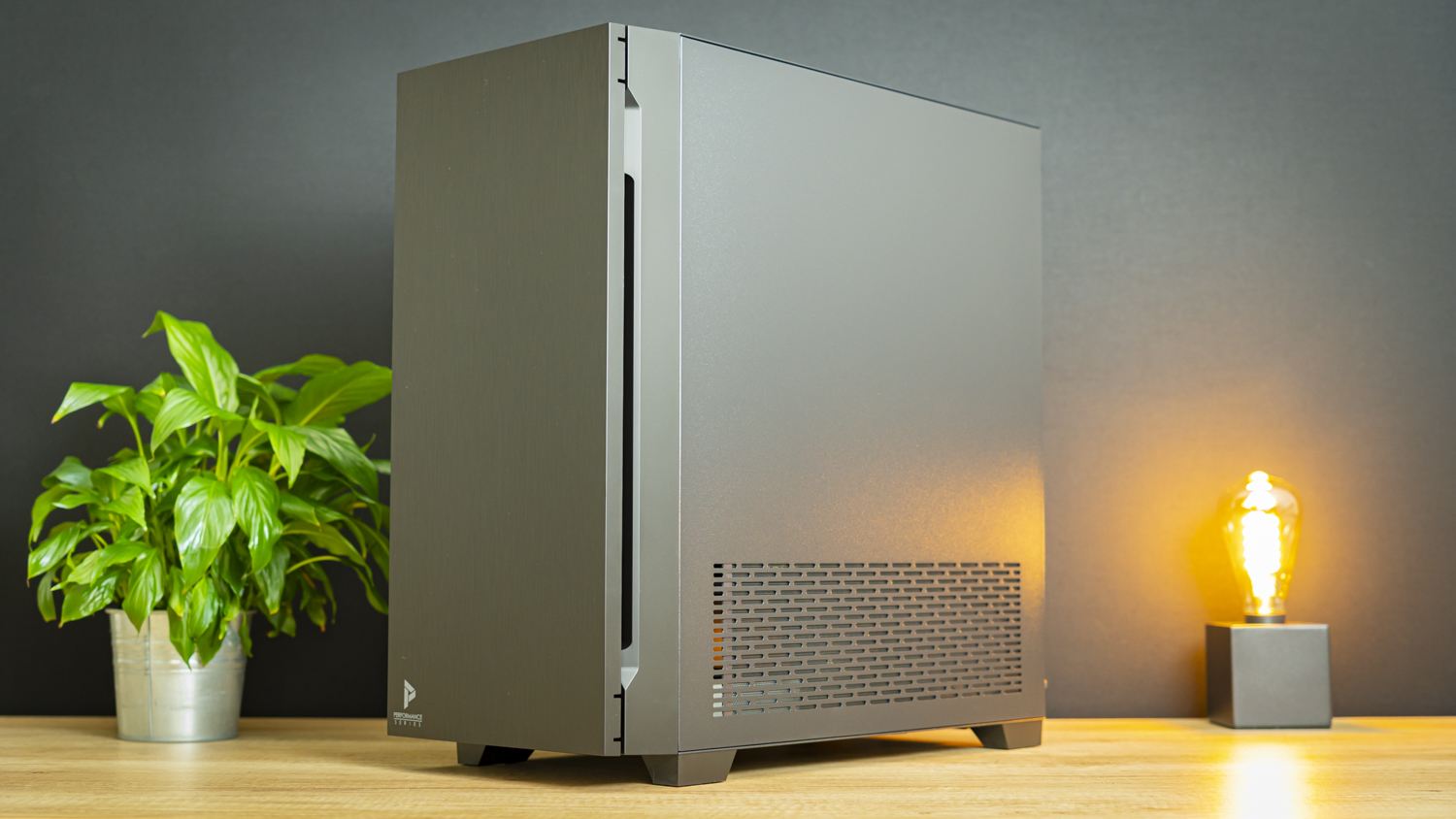
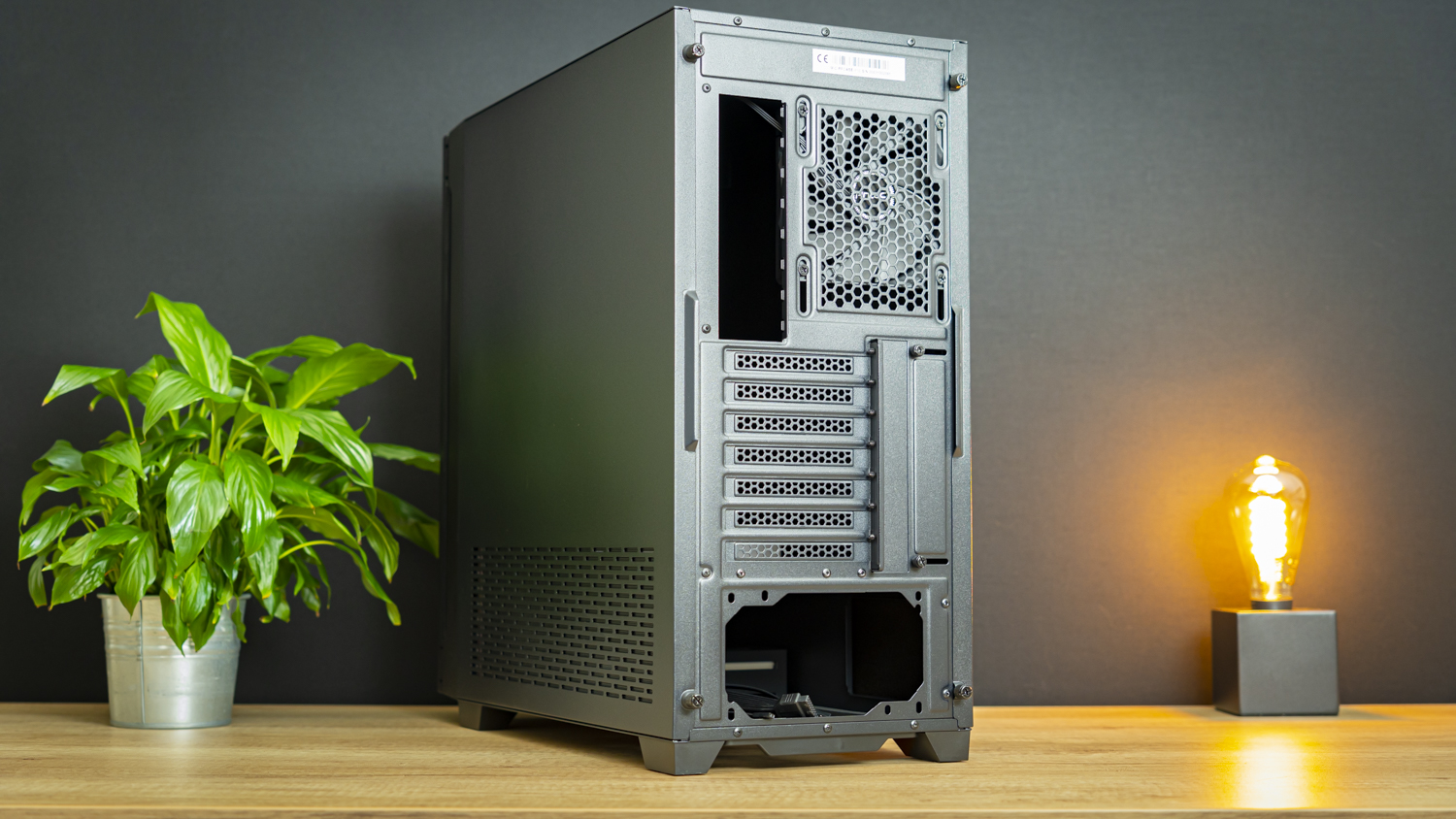
Indeed, the P10 Flux is a silence-focused case, and as such it comes with five fans and tons of damping material. Opening up the top for a radiator would just create a big hole for noise to leak out – so the top is closed and lined with damping material. And not just the top -- the side panels and the inside of the front door are closed as well.
Touring around the outside of the Antec P10 Flux, you’ll spot that there’s very little going on here. There are no tempered glass side panels, nor is there a radiator exhaust at the top of the case. Of course, this is all for good reason – silence – but the end result is a system that does look a bit like a household appliance.
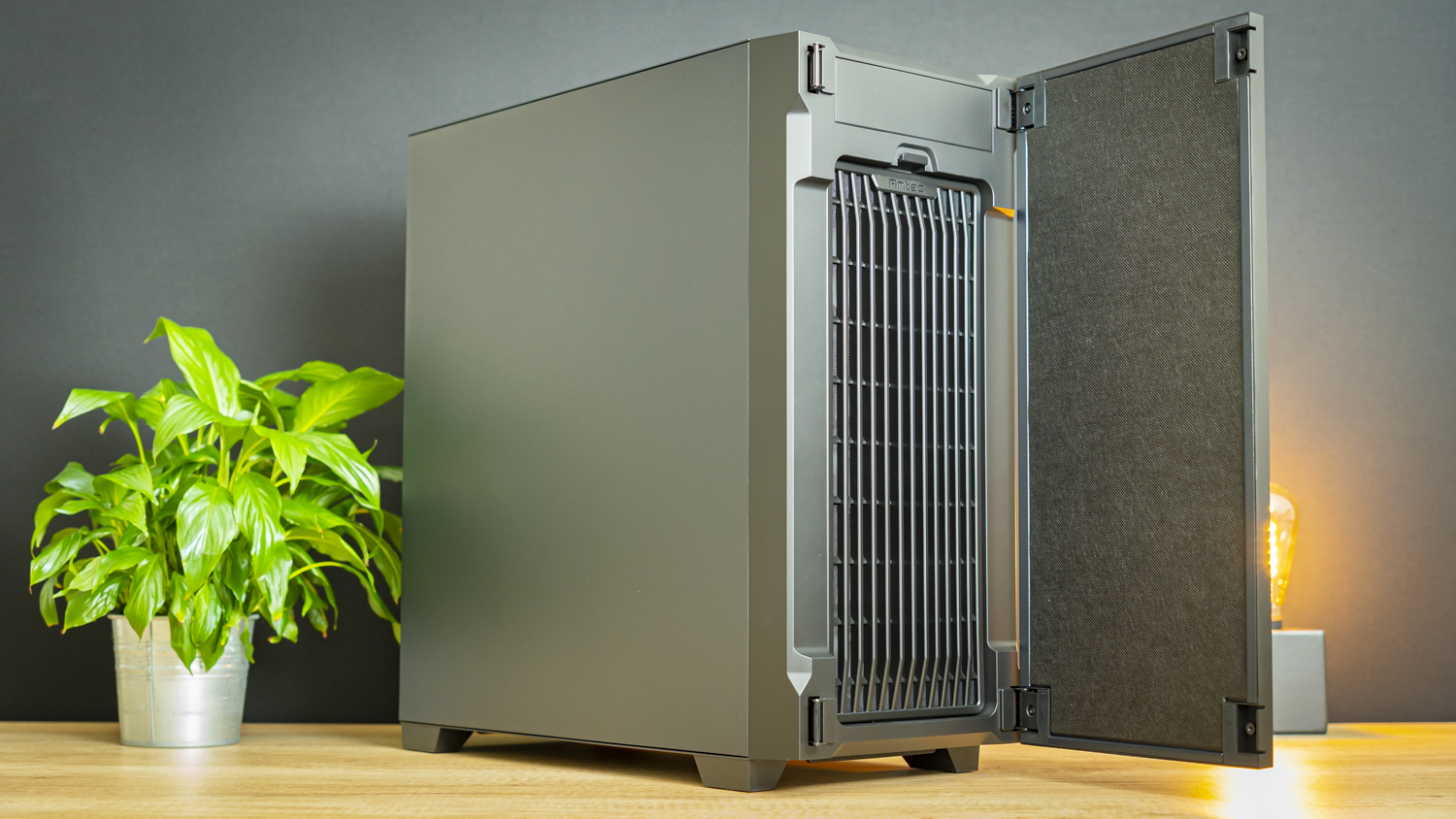
In fact, the front door doesn’t really serve much of a purpose other than noise damping. There’s plenty of clearance on the sides for air to flow through, and yeah it hides the optical drive bay (whoa). But as we’ll see later in testing, it makes a significant difference to noise levels thanks to its layer of acoustic foam. It doesn’t have a fancy double hinge to flip all the way across to the side of the case, but you can reverse it to the other side if your case placement requires.
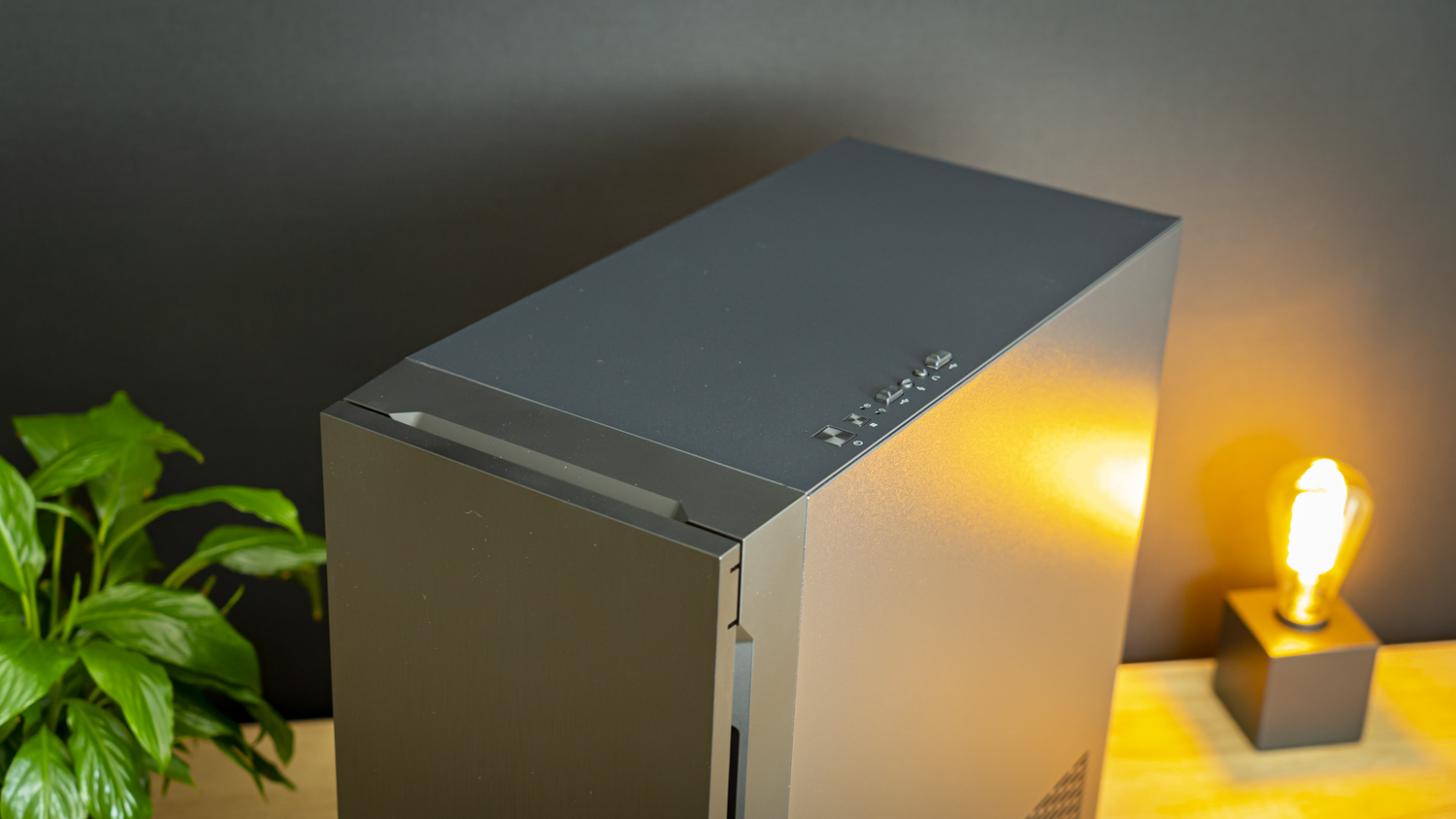
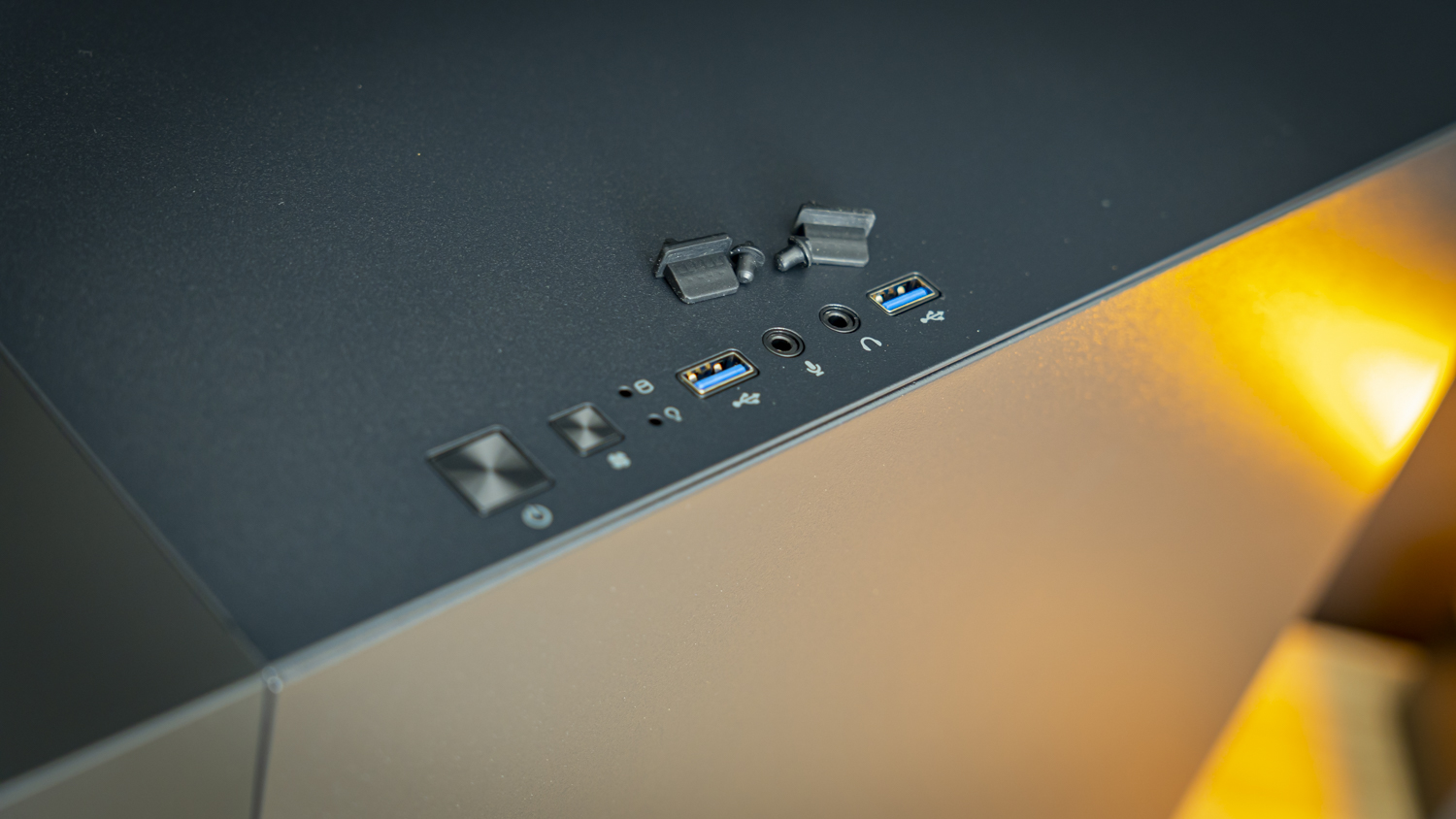
Top IO consists of two USB 3.0 ports, dedicated microphone and headphone jacks, along with power and fan control switches. We appreciate that this IO is placed at the top, as this is not a case you’ll keep on your desk – this is a case for a floor PC.
Get Tom's Hardware's best news and in-depth reviews, straight to your inbox.
Internal Layout
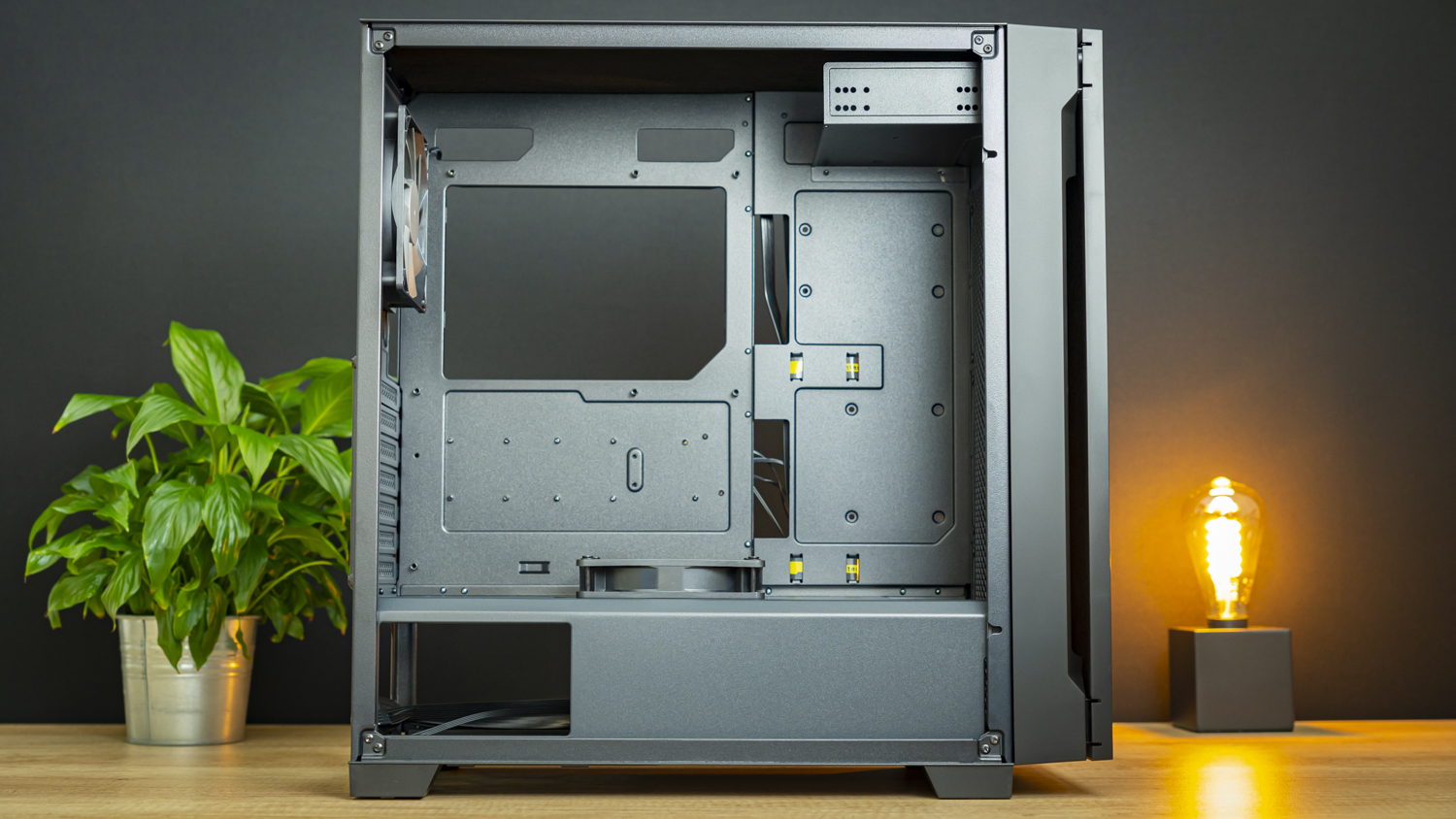
Internally, the P10 Flux offers a basic but modern design – this case isn’t the kind of hard drive colony’s home Antec’s cases used to be. Instead, you’re offered room for an ATX motherboard, plenty of expansion cards, and room for a big radiator up front, up to 360mm. At the top you’ll also spot a 5.25” drive bay – a rarity nowadays, but this is a case that prioritizes function over form.
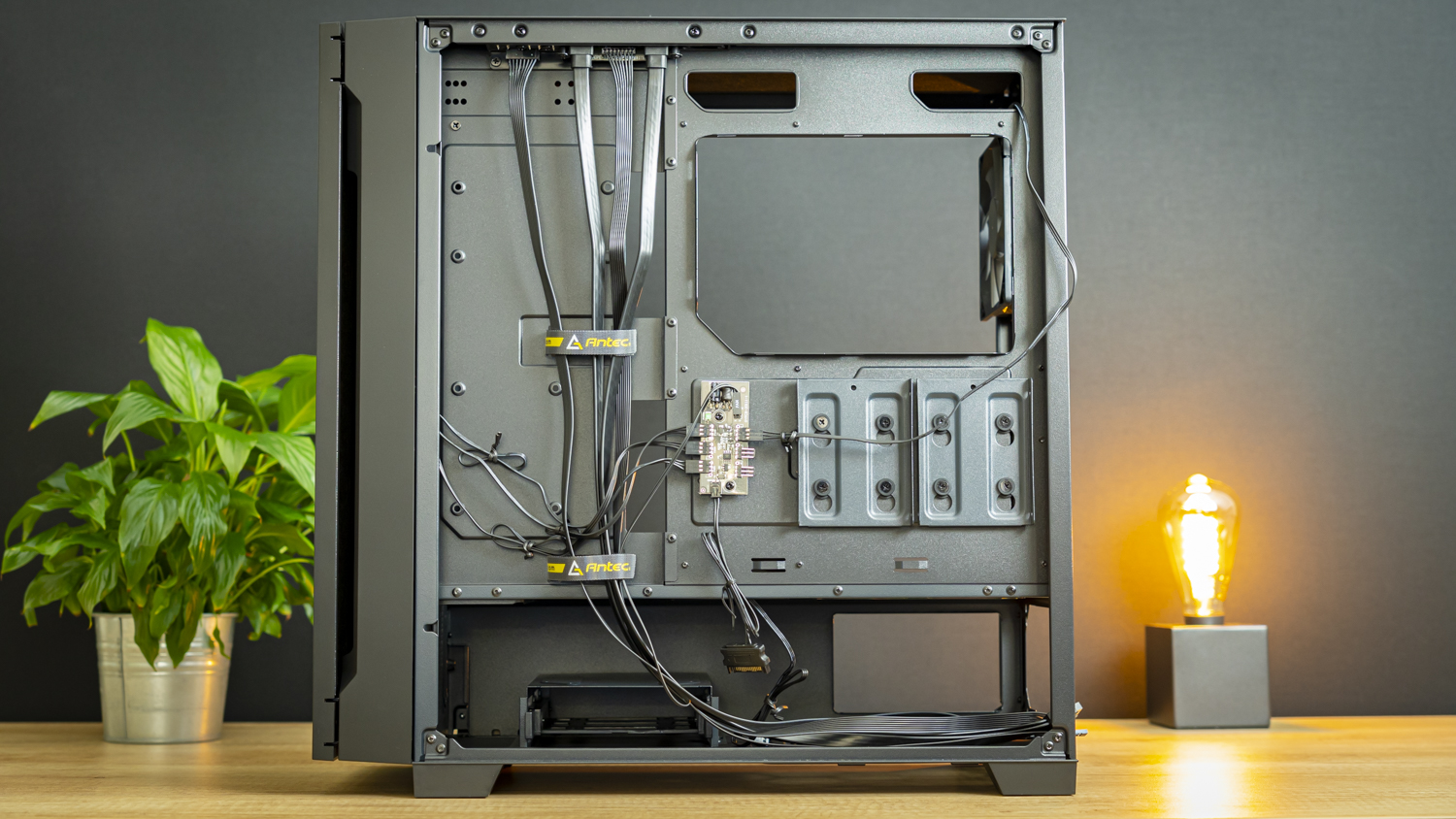
Flip the case around and you’ll find its cable management and PSU area. Here, there is room for big ATX PSUs, two hard drives under the PSU shroud (one inside the caddy and one on top), three SSDs, and you can mount a third 3.5-inch drive at the top shroud near the top IO.
You’ll also spot a fan controller.
Is a ‘Reverse’ Fan, Useful?
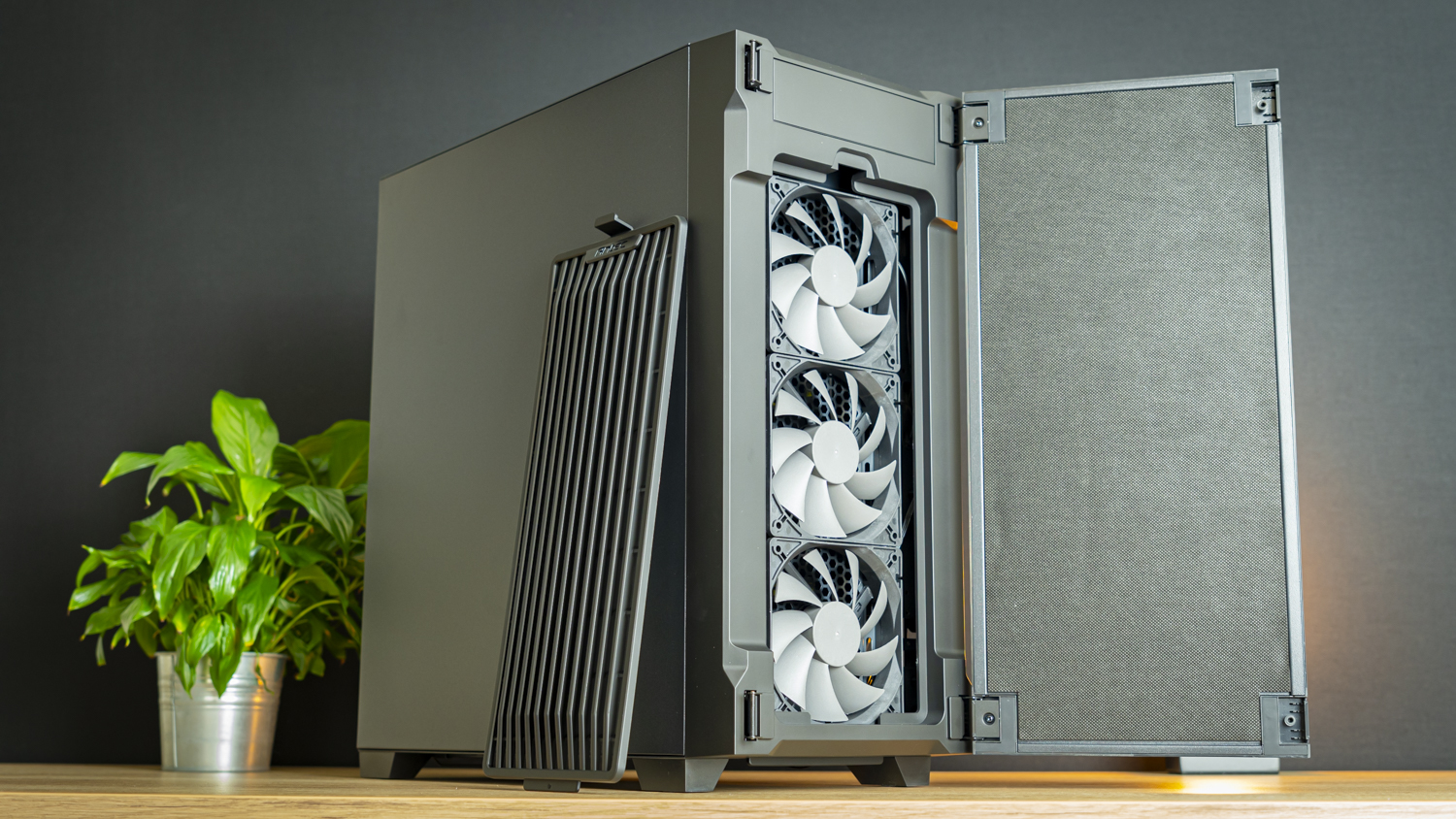
When it comes to cooling and noise, the P10 Flux does a few things differently than many cases we’ve been seeing. For one, it comes with five fans, but it also comes with tons of damping materials spread throughout the case’s door, ceiling and side panels.
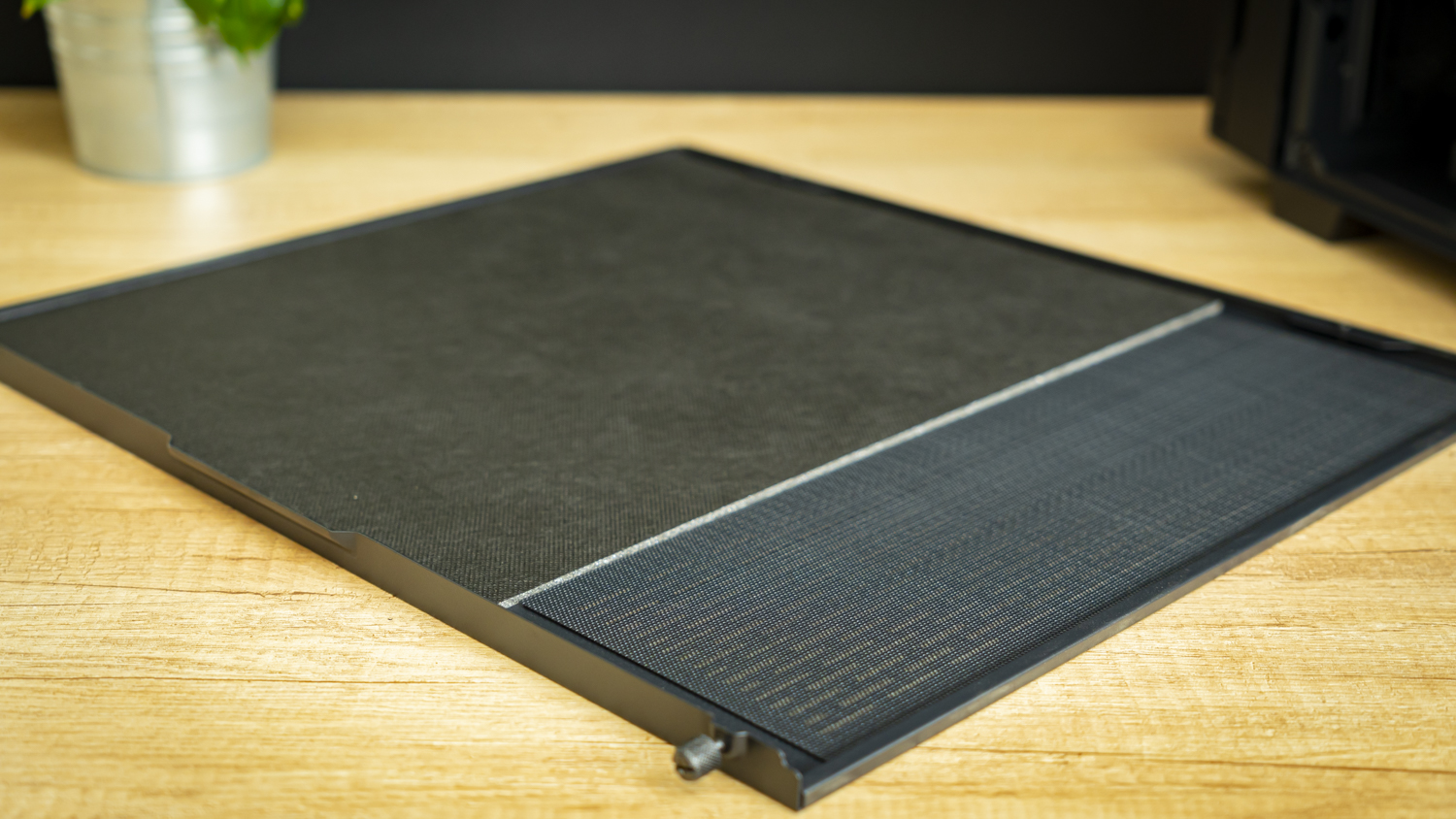
With this much damping, noise levels should be much less intrusive than other cases, even if you use somewhat louder components. Don’t expect miracles, but this case should perform better than most mesh intake cases we’ve been seeing lately when it comes to acoustics.
The case comes with a fan controller that connects to all five fans, giving you two speed modes: low and high.
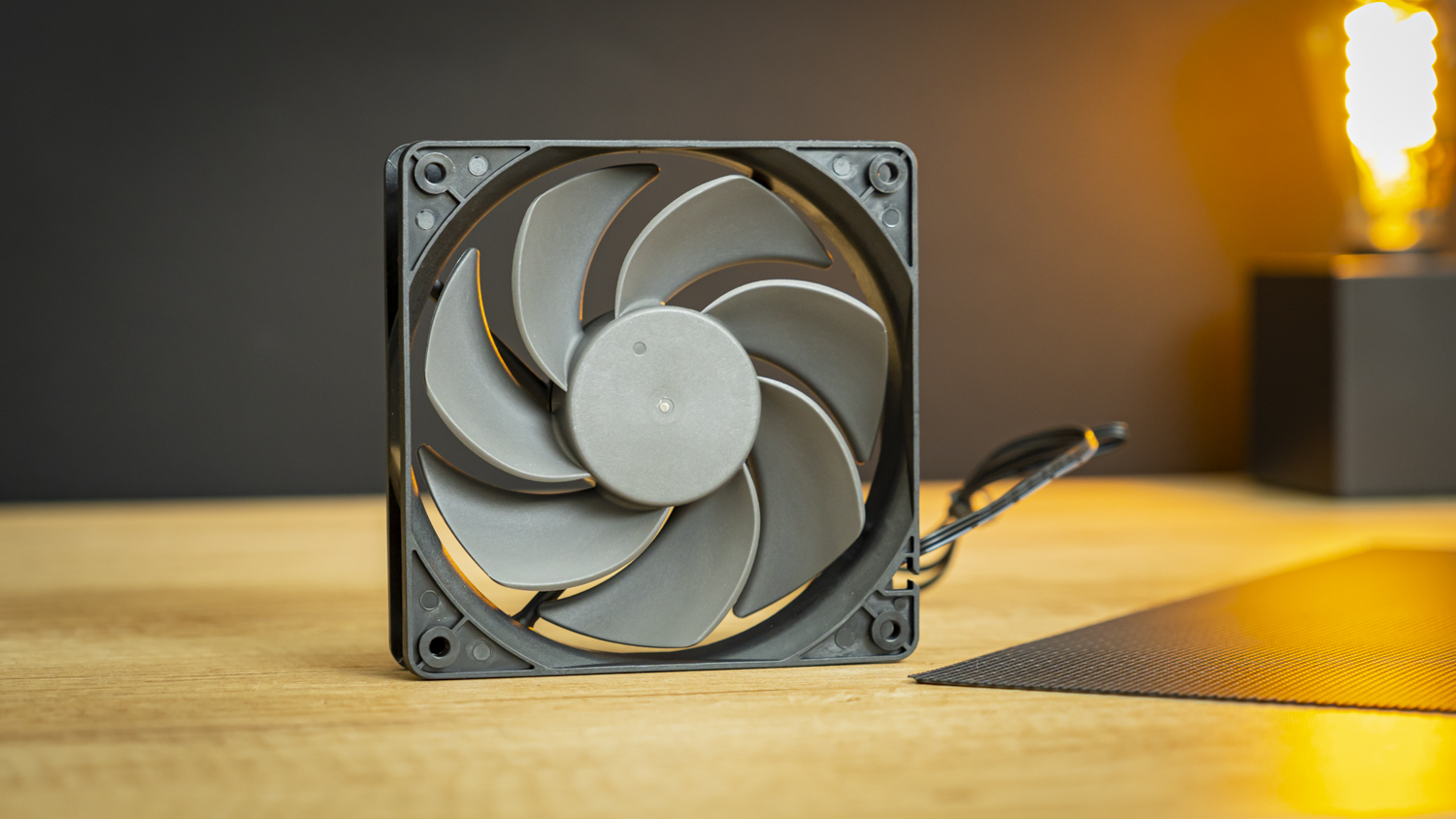
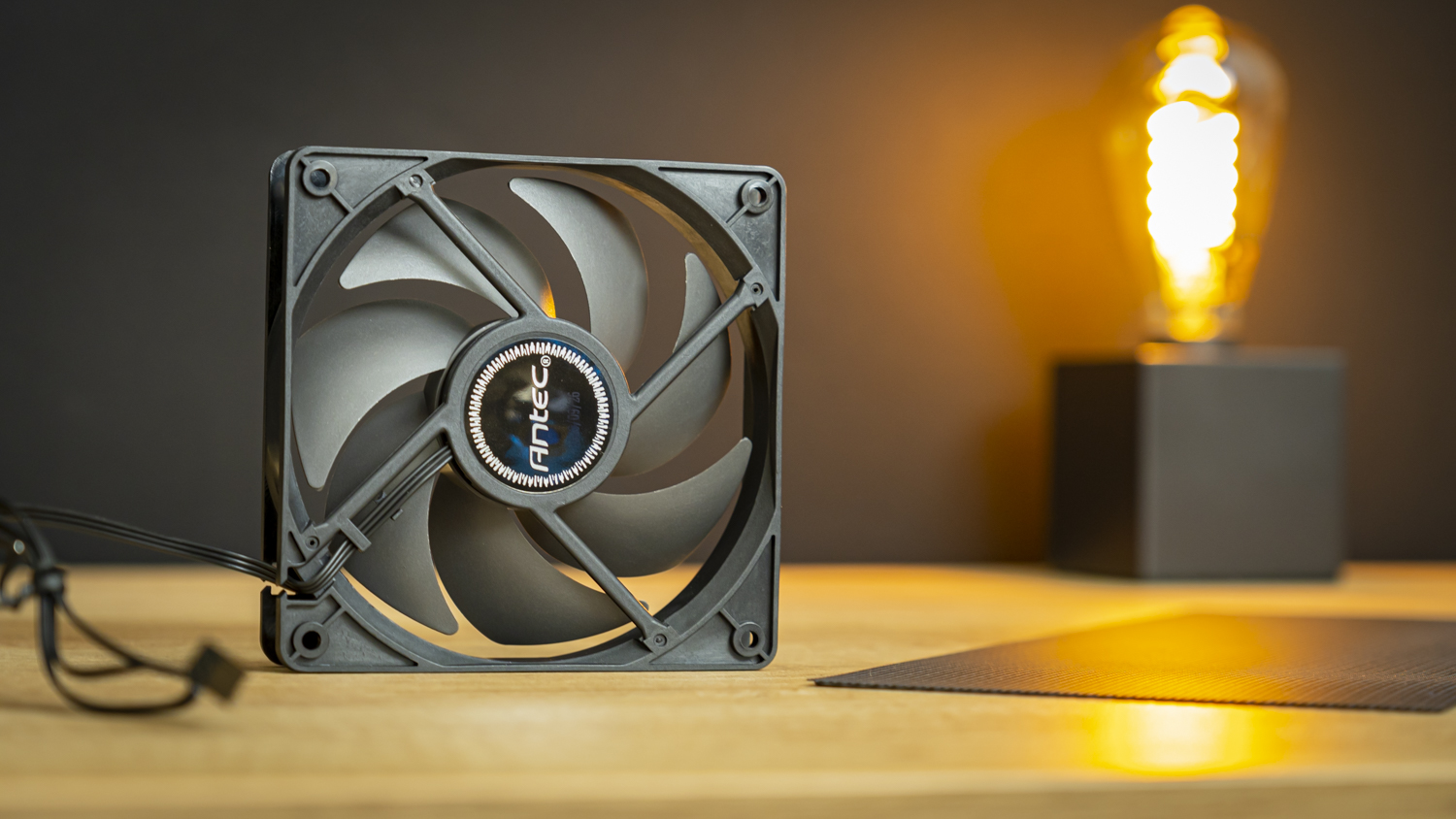
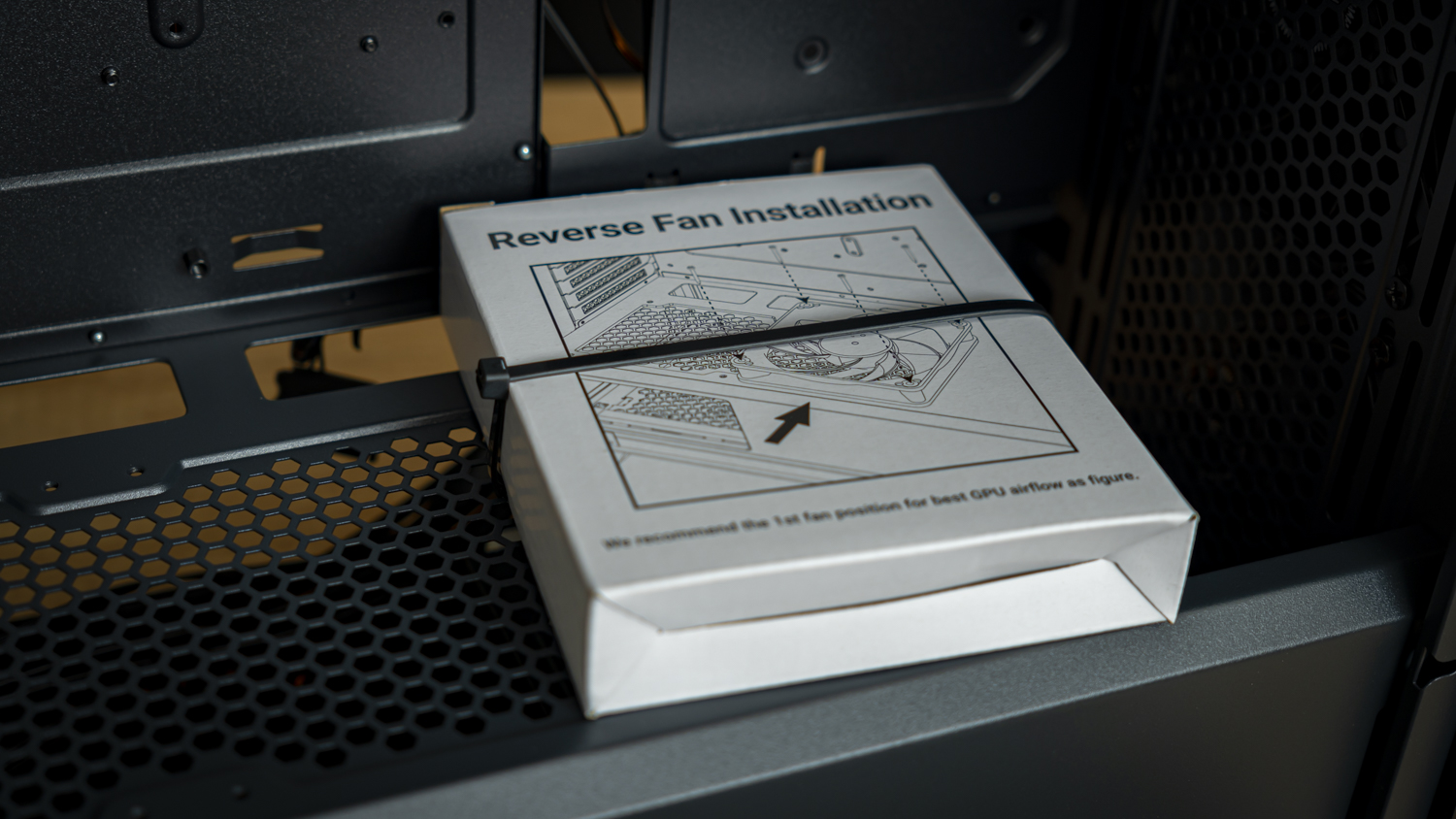
The case also comes with a reverse-flow fan – a spinner that has its blades pointing the ‘other’ way, meant for guiding air from the PSU area to the intake of your GPU for better temperatures. Of course, this exercise in creating a reverse-flow fan for improved looks is pointless in practice, as you might as well use a normal fan flipped over given that there’s no glass panel to see it through. But I still appreciate the detail – I’ve not seen a fan like this in a long, long time.
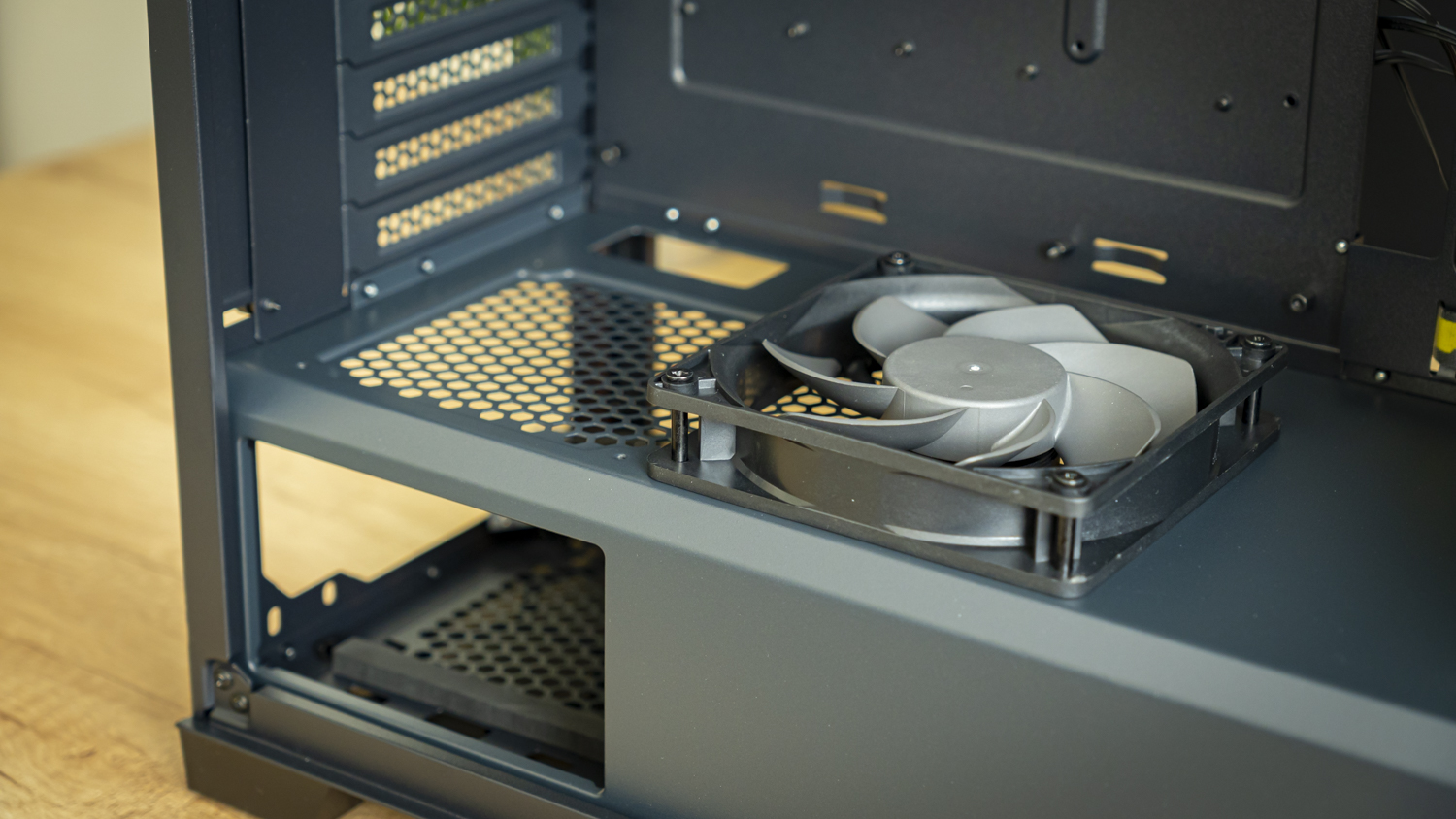
I’m curious to see how this setup will perform when we get to the testing phase.
Niels Broekhuijsen is a Contributing Writer for Tom's Hardware US. He reviews cases, water cooling and pc builds.
-
BillyBuerger I remember when the P180 (and the SPCR edition) first came out. It was a huge case though so I was happy when the mini P180 was released. I picked up two of those and only just now replaced the one I was using with my new PC build. Decided to go ATX instead of microATX so the mini P180 wouldn't work. Instead going with a Sun Ultra 45 Workstation case for a "sleeper" build. Anyways, I for one really like the fact that they removed the top vent on these ones. That was one of my biggest issues with the original. I understand that's a big open area that you can stick MOAR FANS on. But it kind of defeats the purpose of a quiet build. Especially for a floor type PC where the top can be pointing right at you and makes for an easy target for crap to fall into. I always blocked these up myself. Antec never had great fans so no surprise that these aren't good either. My biggest issue with this version is the big open side panel on the back side. Its very possible that depending on your setup, that it might be against a wall or desk and be blocked anyways. But still, like the top vent on the old ones, it somewhat defeats the purpose of all then dampening to then have a big undampened opening.Reply -
gman68 I guess you could call it a throwback case. Like they haven't paid any attention at all to how case design has changed other than getting rid of the hdd stack. My previous build was an ubber sound proofed case from fractal designs with all the noise dampening, no windows, etc. like this case but with the attention to detail that makes FD one of the favored case makers. And it was quiet, until the graphics card fans kicked in hard. Air flow was good but not great by today's standards, and that's got to be a similar issue with this Antec. My current build is another FD case but with a mesh front, mesh top, large case fans and a top end noctua cpu cooler. (NH-D15 black). This system is quieter than the 'silent' one I built previously. There is just no need for all of that sound proofing anymore. The review is well written though.Reply -
Sleepy_Hollowed That's a great case but a deal breaker for me without a top water cooling option.Reply
But regardless of that, it makes for an excellent air-cooled case. -
Co BIY Picture of the "old Antec" cases would have been nice for those without the background.Reply
I think it looks very nice for a case that is other than black. -
peachpuff Reply
Still rocking its bigger brother the p190 with dual psus.BillyBuerger said:I remember when the P180 (and the SPCR edition) first came out. -
namtrooper81 Reply
I still use the original p180 as a home fileserver case. Stuck in a network cabinet in my garage sporting loads of ol mechanicals for mass storage and a single ssd for when I need to transfer client data faster. Now I am being bottlenecked by my gigabit network. Time to try and source 2.5gbp or 5 gbp network equipment and nics.BillyBuerger said:I remember when the P180 (and the SPCR edition) first came out. It was a huge case though so I was happy when the mini P180 was released. I picked up two of those and only just now replaced the one I was using with my new PC build. Decided to go ATX instead of microATX so the mini P180 wouldn't work. Instead going with a Sun Ultra 45 Workstation case for a "sleeper" build. Anyways, I for one really like the fact that they removed the top vent on these ones. That was one of my biggest issues with the original. I understand that's a big open area that you can stick MOAR FANS on. But it kind of defeats the purpose of a quiet build. Especially for a floor type PC where the top can be pointing right at you and makes for an easy target for crap to fall into. I always blocked these up myself. Antec never had great fans so no surprise that these aren't good either. My biggest issue with this version is the big open side panel on the back side. Its very possible that depending on your setup, that it might be against a wall or desk and be blocked anyways. But still, like the top vent on the old ones, it somewhat defeats the purpose of all then dampening to then have a big undampened opening. -
Jughead79 I really like this case and seriously considering it for my next build. Seems like the only thing holding it back from being perfect is better fan control. Any thoughts or advice on how to get the 5 case fans connected to a motherboard for voltage control? Or some other fan control solution?Reply
